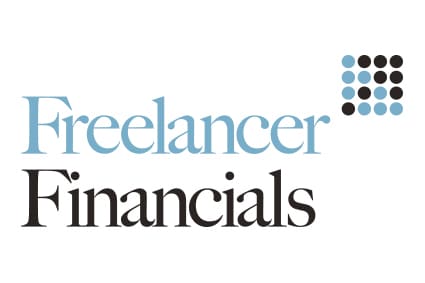Making Tax Digital is the government’s flagship scheme that requires online tax filing and payment, as well as digital record keeping. All business taxes will be part of the scheme, but only Making Tax Digital for VAT currently has an actual roll-out date, with the rest following in 2020 at the earliest.
MTD’s impact on businesses large and small is likely to be significant. The government says Making Tax Digital will reduce tax errors and therefore generate £610 million in extra revenue in 2020-21. However, HMRC also emphasises the benefits of digital record keeping for businesses, including real-time record keeping.
Read this article for advice on Making Tax Digital for VAT and below, you will find an infographic providing you information on MTD and a Making Tax Digital checklist to aid your preparations.
Making Tax Digital for VAT resources from HMRC
Four resources have been published by HMRC on its website:
- VAT Notice 700/22: Making Tax Digital for VAT
This details the minutiae of how MTD for VAT will operate for businesses and their agents (typically these are accountants or bookkeepers). It includes illustrated examples and where necessary states rules that are part of the Valued Added Tax (Amendment) Regulations 2018. - Making Tax Digital for Business—Stakeholder Communications Pack
This includes information interested parties can share in order to explain MTD. For example, accountants might use it as a basis for communicating with their clients. The pack explains MTD for VAT at a higher level and is less rigorously formal than the main VAT Notice. - Software Suppliers Supporting Making Tax Digital for VAT
This is a list of software companies whose products can be used for MTD for VAT. To be included, software suppliers must have demonstrated a working prototype, pre-release or released version of their software to HMRC. Sage is included on the list and has been an active consultant throughout the MTD creation and preparation by HMRC, representing the interests of our users and also ensuring we provide the software tools needed by businesses and accountants. - Making Tax Digital for VAT timeline
HMRC has published an illustration showing key implementation dates for MTD for VAT. HMRC’s timeline runs until late 2019.
The MTD for VAT pilot programme was launched in October 2018 and is open to all businesses that wish to take part using MTD-compatible software.
The pilot ends on 1 April 2019, when MTD for VAT is officially mandated for virtually all VAT-eligible businesses (with the exception of some deferred businesses—see below—for whom mandation is deferred until October 2019).
Questions and answers about MTD for VAT
Many businesses, accountants and bookkeepers have questions about MTD for VAT and, thanks to the improved clarity from HMRC, we’re now able to answer these. We’ve tried to keep accounting terminology to a minimum. If you’re a business owner and have queries then speak to your accountant or HMRC.
How does MTD for VAT affect my business (or my clients) and what will I have to do?
VAT-registered businesses with a taxable turnover above the VAT threshold will need to:
(a) Keep and preserve their VAT records digitally
(b) Send VAT returns to HMRC using MTD-compatible software (referred to as “functional compatible software” in the VAT Notice).
VAT Notice 700/22 specifies what VAT records must be kept digitally. Additional VAT records are likely to be required (see the previously published VAT Notice 700/21) and these may be kept electronically or in other formats.
The date when you must start keeping digital records and submitting your VAT return to HMRC using MTD-compatible software will vary depending on when your VAT period starts.
You must start following the MTD rules from the first day of your first VAT period that starts on or after 1st April 2019.
After this date you will no longer be able to manually complete the nine boxes of a paper-based VAT return, or manually complete your VAT return online at the HMRC VAT portal.
Essentially, most businesses will need to switch to using software for their VAT accounting, at least, although MTD is virtually certain for other types of business taxes, such as corporation tax, from 2020 onwards—so the opportunity should be used to switch to entirely digital accounting via software.
When does MTD for VAT begin?
For most businesses, MTD for VAT is mandated from 1 April 2019. However, for “deferred” businesses—comprising around 3.5% of the total—MTD for VAT begins from October 2019. See below for examples of deferred businesses.
Does MTD for VAT apply to my business (or my client’s)?
In simple terms, if your business (or your client’s business if you’re an accountant) is currently VAT-registered with a VAT-eligible turnover then, yes, MTD for VAT will apply.
If you suspect your business or client will soon be within the VAT threshold, then in order to be compliant with MTD for VAT, the business should immediately start to keep VAT records digitally using software to ensure the legal requirement for record keeping and preservation is complied with, if it isn’t already.
Remember that MTD for VAT isn’t just about digitally filing VAT returns. It’s also about keeping and preserving records digitally.
Following the introduction of MTD for VAT, can HMRC’s VAT portal website be used to file VAT returns? After all, that’s “digital”
Filing must be done via MTD-compatible software, so cannot be done manually via HMRC’s website (or via paper forms-based filing).
What are deferred businesses?
HMRC has announced that some types of businesses have a deferred MTD for VAT start date of October 2019. These businesses are also not permitted to join the MTD for VAT pilot programme until spring 2019.
The following businesses are deferred for MTD for VAT:
- Businesses required to make payments on account
- Annual accounting scheme users
- Trusts
- Not-for-profit organisations that are not set up as a company
- VAT divisions
- VAT groups
- Public sector entities that are required to provide additional information on their VAT return
- Local authorities
- Public corporations
- Traders based overseas
Will my business’s VAT deadlines (or those of my clients) change with MTD for VAT?
MTD for VAT does not alter deadlines, nor existing VAT filing periods. Most businesses file quarterly, with the rest filing either monthly (typically very small businesses) or weekly (larger businesses). The only difference is that the filing process must now be done digitally, complete with digital record keeping and preservation.
What if my business VAT filing period (or that of my clients) falls across the deadline for MTD for VAT?
MTD for VAT will apply for your first full VAT period that starts on or after 1 April 2019. Here are examples dates that assume quarterly filing:
- 31 March 2019 end date: Your first VAT quarter under MTD for VAT will start on 1 April 2019.
- 30 April end date: Your first VAT quarter under MTD for VAT will start on 1 May 2019.
- 31 May end date: Your first VAT quarter under MTD for VAT will start on 1 June 2019.
Does my business (or client) have to provide more information to HMRC as part of MTD for VAT?
No. You’re still required to provide the same nine boxes of information. You’re just required to do so digitally, via your MTD-compatible software, based on the digital records you’ve been keeping and preserving.
HMRC have said they will request supplementary data in the future but that this will be voluntary. HMRC have not yet confirmed what this data will be.
Can my business (or client) continue to use a spreadsheet for VAT filing and record keeping with MTD for VAT?
For a variety of reasons, a spreadsheet by itself is unlikely to meet all the requirements when it comes to MTD for VAT (or indeed MTD for any other kind of business tax from 2020 onwards).
Theresa Middleton, director of MTD for Business at HMRC, confirmed this to Sage Advice:
“The strong advice I’m giving to people is: If you’re an accountant and you’ve got new clients joining, or you’re newly setting yourself up in business, you should probably go digital first rather than use a spreadsheet.”
It can be hard to abandon spreadsheets, especially for accountants, for whom they’re an indispensable tool. And in fact, it is feasible for a spreadsheet to be a component of a wider MTD for VAT-compliant solution that also includes an MTD-compatible bridging tool to connect to HMRC’s computers, plus other components.
However, using spreadsheets for MTD exposes a significant issue that could land a business in hot water. HMRC states that, by law, VAT records must be kept and preserved.
It’s incredibly easy to accidentally change the content of a spreadsheet cell even when simply viewing a spreadsheet—which would mean the data is no longer being preserved.
It’s also easy to get spreadsheet formulae wrong in any event, which could lead to penalties for incorrect payments.
Yes, you can take measures to protect cells against changes, or automatically check formulae for errors, but when you’re attempting to find ways around basic limitations like this, it surely becomes clear why HMRC and indeed virtually every other authority advises the use of software for business accounting—including VAT.
Notably, HMRC is offering a 12-month long “soft landing” during which they say it will be acceptable to copy and paste data from a spreadsheet (see “What’s the MTD for VAT “soft landing” period?” below) to other software. Following the soft landing period, copy and pasting from spreadsheets will not be permitted.
If my business shouldn’t use spreadsheets, what software or technology do I need for MTD for VAT?
HMRC says you need software (or a set of programs) that can do the following as a minimum:
(a) records and preserves digital records relating to VAT
(b) send to HMRC information and returns from data held in the above digital records
(c) receive information from HMRC.
Good MTD-compatible accounting software will undertake all these tasks as a matter of course. If you use more than one application then all the software you use will need to be digitally linked (see “What’s a digital link in MTD for VAT?“), and it is not permitted for you to manually copy information from one system to another.
However, and notably, the digital records used for MTD for VAT don’t need to be stored in a single program, or in a single place—but they do need to be stored digitally.
If you use more than one software package, at least one of them must be able to record and preserve digital records for the purposes of VAT.
What’s a digital link in MTD for VAT?
This is one of the technical terms is at the heart of unlocking what HMRC means when it talks about making tax digital (the other is “digital record“).
To comply with MTD legislation, all the software you use must be digitally linked to create what HMRC call a “digital journey” for your VAT payments, and this journey must be in place for all your business finances for when MTD for other taxes is mandated from 2020 onwards.
It’s actually quite simple. A digital link is one where data can be transferred between different software or computer systems. It also includes formulae in spreadsheets as part of the VAT calculations.
For example, if you use a mobile app to record invoices and it then transfers this data to your main accounting software, then that’s a digital link. Crucially, the link is both digital and automated. You might have to tap or click to initiate the transfer to data but once you do, it happens digitally.
The definition of a digital link is surprisingly broad. It includes emailing a spreadsheet to your accountant, for example, so they can import the data into their software for the purposes of calculating and filing your VAT liability.
It even includes passing files to your accountant on a USB memory stick for this purpose. If you do use a spreadsheet and it includes formula, then you will need to ensure the spreadsheet is saved with all formula in place to retain this digital link.
Cutting or copying data from one piece of data and pasting it into another piece of software isn’t accepted as a digital link. In this example, for MTD compliance the ledger for the invoice must be digitally linked to the other ledger or software package through a more automated mechanism such as file sharing or integration.
Is it really the case that my business (or that of my clients) can’t use paper-based documents like invoices, or create notes while visiting clients?
You need to digitally keep and preserve information relating to VAT, and file VAT returns digitally using compatible software.
This doesn’t stop you creating paper-based notes or invoices, but the invoice level data must be transferred into your MTD-compatible software at some point. For example, it will no longer be legal to simply enter the monthly total of all invoices into your digital software.
Notably, there’s no requirement for the MTD-compatible software to issue the invoice but, again, most of the invoice details must be entered into the software at some point—and once there must be preserved, it is likely to be more efficient to simply issue the invoice directly from your software if this is possible.
What’s the MTD for VAT “soft landing” period?
The term “soft landing” was introduced early in the MTD for VAT discussions and the meaning has changed over time so it’s important to understand the legal meaning which is defined in the VAT Notice.
During the first 12 months, HMRC will accept cut and paste of data (or copy and paste) as a digital link. However, even though this is done solely via a computer, it’s not automated, so isn’t considered a digital link as defined by the MTD for VAT regulations. This is the case even if you’re cutting or copying and pasting within the same software program.
The one exception to this is where data is transferred, following preparation of the information required for the VAT Return, to another product (for example, a bridging product) that is API-enabled solely for the purpose of submitting the nine-box VAT return data to HMRC. The transfer of data to this product must be digital.
According to HMRC, the soft landing period is only to allow businesses time to update legacy systems.
It would be a mistake for businesses and accountants to spend the soft landing period to simply put-off switching to a fully digital solution for VAT. This would leave zero room for error or testing—and could therefore lead to significant penalties should you fail to file, or file incorrect amounts.
What’s a digital record—and what digital records does my business (or my clients) have to keep for MTD for VAT?
As you’ll know already if you file VAT, you must keep and preserve certain records (as described in VAT Notice 700/21). With MTD, some of these records must be kept digitally using MTD-compatible software.
Records that aren’t required to complete your VAT return don’t need to be kept digitally—although good accounting software will help keep most if not all of your records digitally, putting you in the best place for further MTD implementation by HMRC in 2020 and beyond.
VAT Notice 700/22 sets out what VAT records must be kept digitally, which for most businesses includes your business name, the address of your principal place of business, your VAT registration number and details of any VAT accounting schemes that you use.
Most businesses will also need to record, for each invoice (or “supply” in the VAT Notice terminology), the time and date of supply (tax point date), the net value (excluding any VAT) and the VAT rate used to calculate VAT.
Some businesses will need to keep more or less information depending on their VAT scheme and circumstances.
All accounting software will record more information than this, however, and it’s essential to do so in order to run your business efficiently and correctly. You will almost certainly keep additional records such as invoices for supplies.
Technically speaking these don’t need to be kept digitally for MTD for VAT but, as mentioned, your business will be at a significant disadvantage in future if you fail to do so.
It’s important that every business understands their obligations, accounting software vendors or professional advisers (such as a bookkeeper or accountant) may be a good source of further information and advice.
Does MTD for VAT apply to all VAT schemes?
There are many VAT schemes and some (like the Flat Rate Scheme) are more common than others. VAT Notice 700/22 explains what details must be recorded and preserved digitally. Any records that you currently need to retain but are not specified in this VAT notice can be retained either digitally or in another format (e.g. on paper):
Flat Rate Scheme
If you are a small business and use the Flat Rate Scheme you don’t need to keep a digital record of your purchases unless they are capital expenditure goods on which input tax can be claimed.
You also don’t need to keep a digital record of the relevant goods used to determine if you need to apply the limited cost business rate.
Retail Scheme
If you account for VAT using a Retail Scheme—for example, because you make sales using a Point of Sale (POS) terminal—you must keep a digital record of your Daily Gross Takings (DGT).
You aren’t required to keep a separate digital record of the supplies that make up your DGT within functional compatible software.
Margin Scheme
If you account for VAT using the Margin Scheme because you resell second-hand goods, works of art, antiques, collectors’ items or are a tour operator using the Tour Operators Margin Scheme (TOMS) you aren’t required to keep the additional records required for these schemes in digital form.
You’re not required to keep the calculation of the marginal VAT charged in digital form. These records must still be maintained in some format.
Under MTD for VAT, what digital records does my business (or client) need to keep for any adjustments—including partial exemption adjustments and fuel surcharge adjustments?
Where you are allowed or required to adjust the VAT amount in line with existing VAT rules, you must record this adjustment in MTD-compatible software as a digital record.
Only the total for each type of adjustment must be a digital record, not details of the calculations underlying them. If the adjustment requires a calculation, a digital link isn’t required to the detailed calculation.
However, it’s a good idea to retain a digital link (for example, attaching a calculation spreadsheet to a journal) as this could help with any future audit or investigation.
Partial Exemption
A business is partly exempt if it makes, or intends to make, both taxable and exempt supplies and incurs tax on costs which relate to both the exempt and non-exempt activities.
For example, a charity or not-for-profit organisation may also run a commercial activity such as a charity shop, or a paid-for event, and have costs that relate to both activities.
Businesses that are partially exempt can’t recover all the VAT they paid on purchases (input tax), but instead need to calculate what percentage is recoverable as it relates to the non-exempt activities.
As with most other adjustments, only the total for each type of adjustment will be required to be kept as a digital record, not details of the calculations underlying them.
Fuel Scale Surcharges
If your company is registered for VAT you can reclaim the VAT element of any expenditure on fuel provided by your company for use with company cars. This usage includes both private and business mileage.
In return, HMRC require a charge to be paid. This charge is calculated for each vehicle from the scale charge tables in HMRC Public Notice 700/64 Motoring Expenses. You can work out the charge using the HMRC website.
Once calculated, only the total adjustment must be kept as a digital record, not details of the calculations underlying them.
My business (or client) is VAT registered but turnover is under the threshold. Does MTD for VAT apply?
The business can continue complying with MTD for VAT and although it’s possible to volunteer to file via MTD, it’s perhaps more likely businesses will want to opt out.
In such a case you must tell HMRC in writing that the business wants to “deregister” (HMRC doesn’t specify how this can be done but we assume it can be done via webchat, phone or post).
If a business is voluntarily registered for VAT then as soon as the taxable turnover is above the VAT threshold, the MTD rules become mandatory. After this, if the taxable turnover falls below the VAT threshold, these rules continue to apply unless the business deregisters from VAT.
Once a business has exceeded the VAT threshold for a reporting period it’s not possible to deregister from MTD for VAT without also deregistering for VAT.
Is my business or client exempt from MTD for VAT?
Outside of turnover being below the threshold, exemptions are allowed under the following conditions:
(a) religious beliefs are incompatible with the requirements of MTD for VAT. This is typically that the individuals running the business are unable to use computers because of their beliefs.
(b) reasons of age, disability, remoteness of location or in HMRC’s words “any other reason” that mean it’s not “reasonably practicable” for the business owner to use digital tools to keep business records or submit returns. For example, a business without an internet connection because it’s on an island that’s off the grid might be considered exempt.
(c) the business is subject to insolvency procedures.
To apply for exemption, you will need to contact HMRC’s VAT Helpline to discuss the situation and arrange alternative measures. Note that if HMRC believe exemption isn’t appropriate, they may offer digital assistance to help the business get online support.
How does my business or client record mixed supplies under MTD for VAT?
If you supply both VAT and reduced/zero-VAT items as a single inclusive price, you don’t have to record them separately under MTD for VAT. Just record the total value and the total output tax due.
If your software doesn’t allow you to record the sale at anything other than standard, reduced or zero, record the sale at one rate and then use an adjustment at the end of the period to correct it.
How is group VAT affected by MTD for VAT?
HMRC consider members of a VAT group to be a single entity for VAT purposes. All group members are required to keep digital records as described above, with digital links to one member’s MTD-compatible software that then collates the records in order to communicate with HMRC.
I’m an accountant whose clients rely on spreadsheets. Can they simply email me those spreadsheets for the purposes of MTD for VAT?
The business will need to ensure the correct digital records are kept (see “What’s a digital record—and what digital records does my business (or my clients) have to keep for MTD for VAT?” above). A spreadsheet is unlikely to be enough for this task (see “Can my business (or client) continue to use a spreadsheet for VAT filing and record keeping with MTD for VAT?” above).
From an accountant’s perspective, if the spreadsheets are the primary business records of the transactions, then copying and pasting data from a spreadsheet isn’t permitted under MTD for VAT legislation so at the very least you will need software that can import spreadsheet data automatically.
However, as their accountant you should encourage your clients to switch not just to accounting software but ensure whatever they use digitally links to your own practice software so that you are able to access their VAT records—and are also able to advise them if they are not keeping the correct VAT records.
This is likely to present challenges for you clients as well as your own practice.
MTD for VAT presents significant business opportunities for accountancy practices to make contact with clients and advise them on the best ways forward to ensure they’re MTD for VAT compliant (and to prepare them for further business-related MTD changes from 2020 onwards).
What’s an API in MTD for VAT?
An application programming interface (API) is the technical term describing how one software package connects to another to transfer data. HMRC use the term to describe the way software packages connect to their systems for the purposes of MTD. All MTD-compatible software will utilise HMRC’s API.
What’s a bridging tool, or bridging software in MTD for VAT?
To try and reduce the impact of MTD for VAT as much as possible, HMRC allows the use of bridging software whose purpose is solely to connect to HMRC in order to send VAT information. (In other words, it connects to HMRC’s API—see “What’s an API in MTD for VAT?” above).
The idea is that bridging software can do the heavy lifting work for non-MTD-enabled software, so that businesses or accountants can continue working in the way they do. It’s even possible to use a bridging solution to send VAT returns to HMRC from a spreadsheet.
Bridging solutions are somewhat dangerous, however, in that they are far from a full solution, for the following reasons:
- You will need to keep and preserve digital records for VAT and a bridging solution cannot do this.
- You need to ensure your accounting systems relating to VAT are digitally linked and a bridging solution can’t do this.
There’s a significant danger that businesses or accountants using a bridging solution might believe they are “MTD compliant” when in reality they aren’t.
A bridging tool might be seen as a temporary stop-gap measure, at the very most, but should really be avoided in any adaptation process for MTD for VAT.
Editor’s note: This post was originally published in July 2018 and updated in November 2018, has been updated again for relevance.






Reading this and also the HMRC link which provides listings of software suppliers (given that HMRC is not providing its own free software), is there anyone yet who has done a comparison as to what is on offer and, more importantly, what the cost is? I am at the very bottom end of the market: I do my own accounts and VAT, and have very little in the way of transactions – one invoice per month and a few purchases mainly of services. So I don’t want to buy a Rolls Royce, and will continue to do my accounts as now, on spreadsheets.
Google for free Bridging Software.